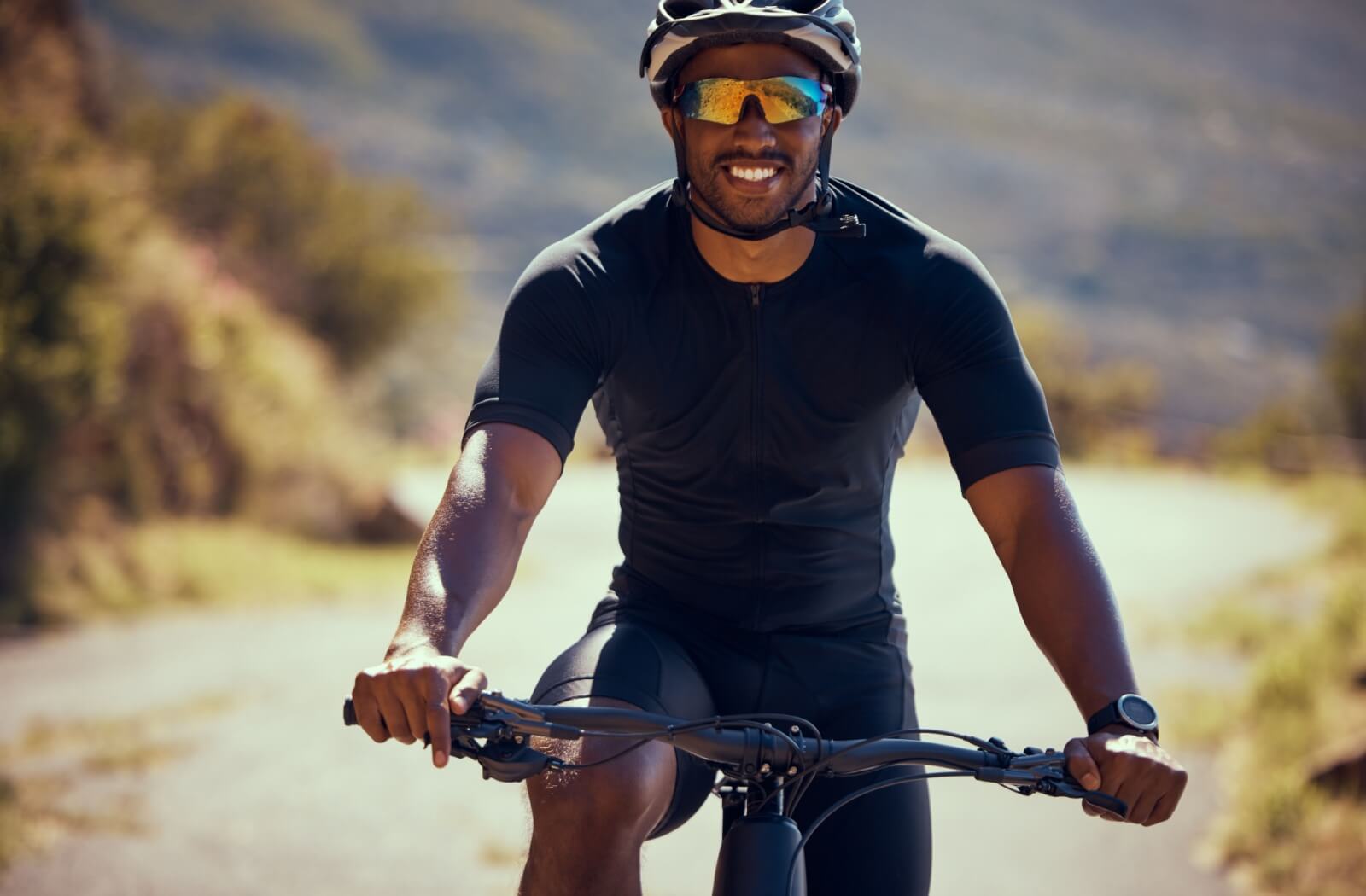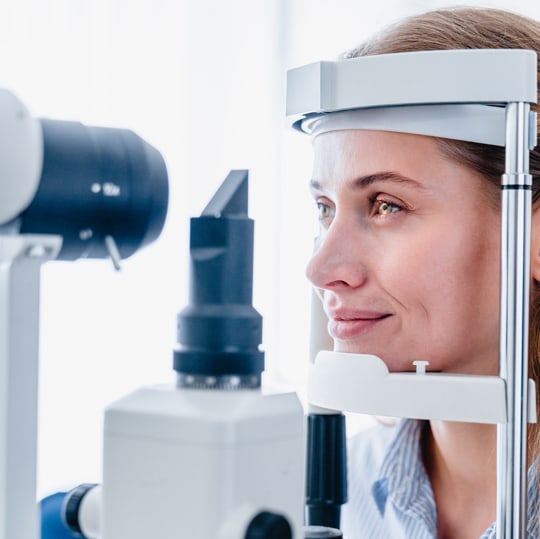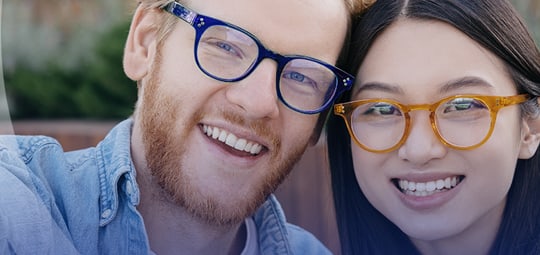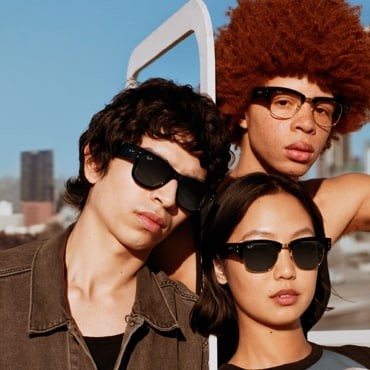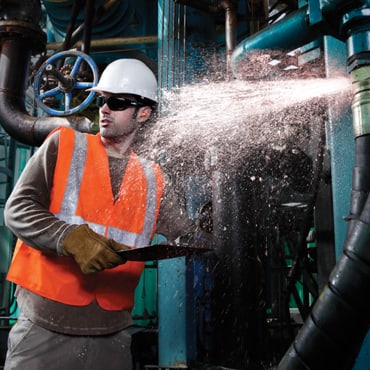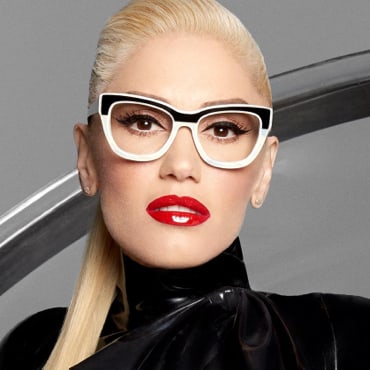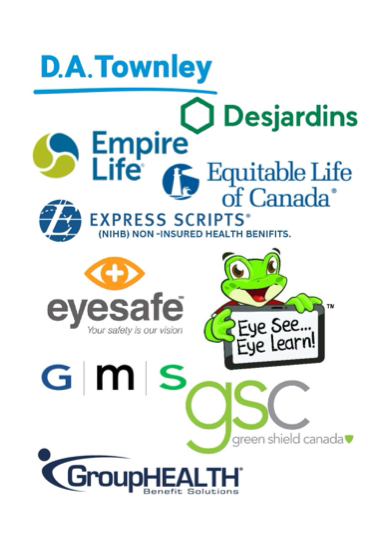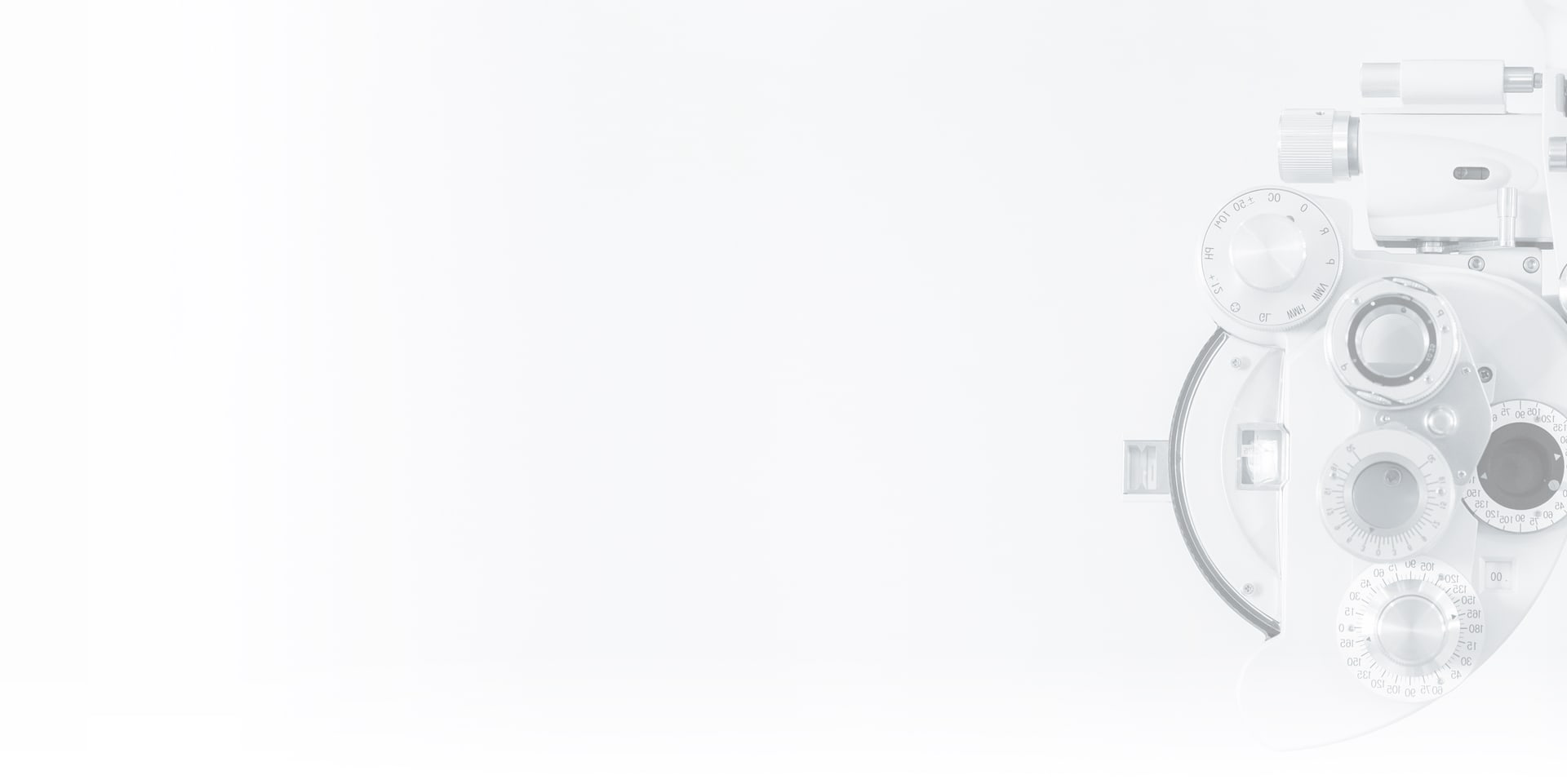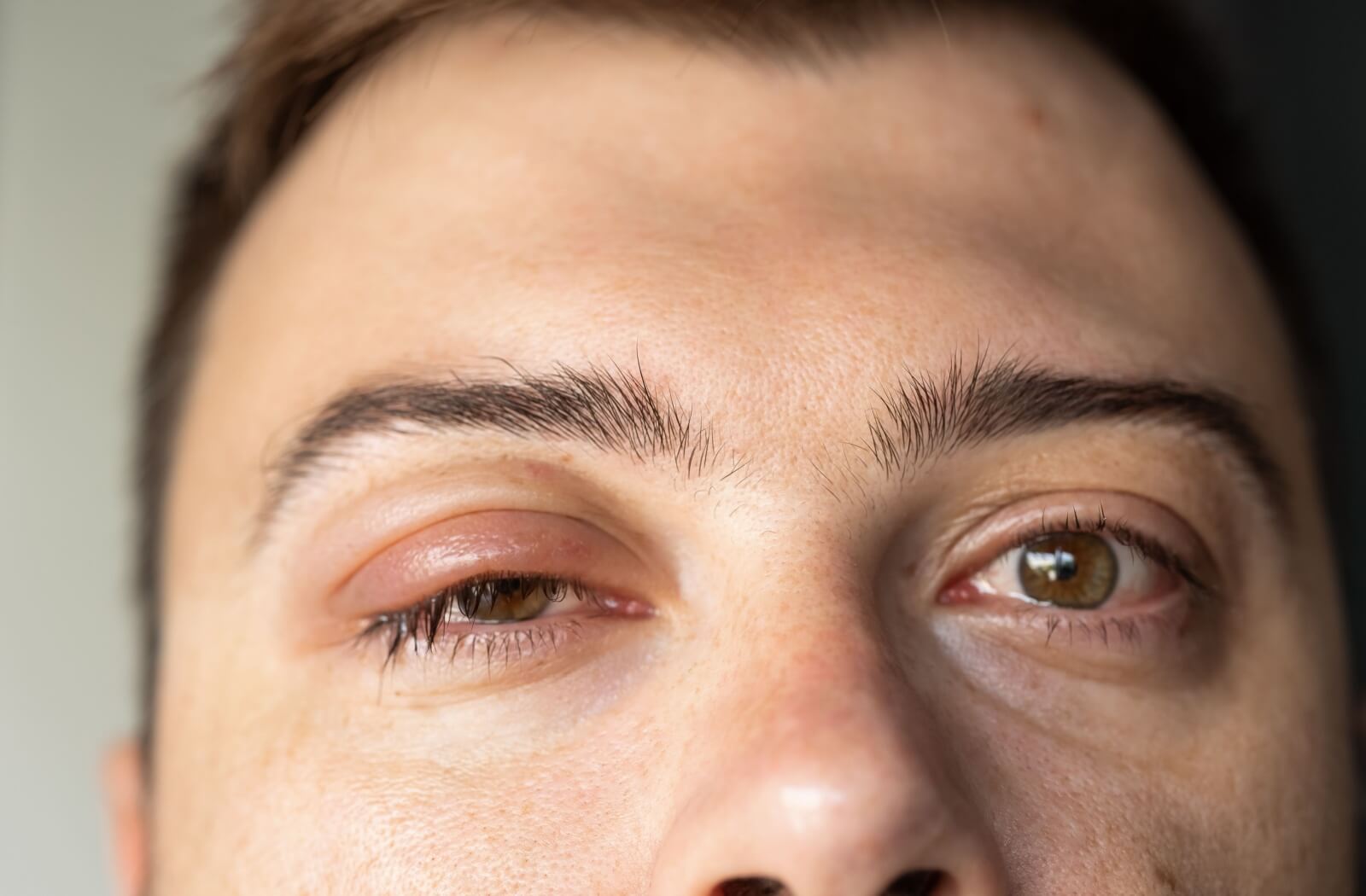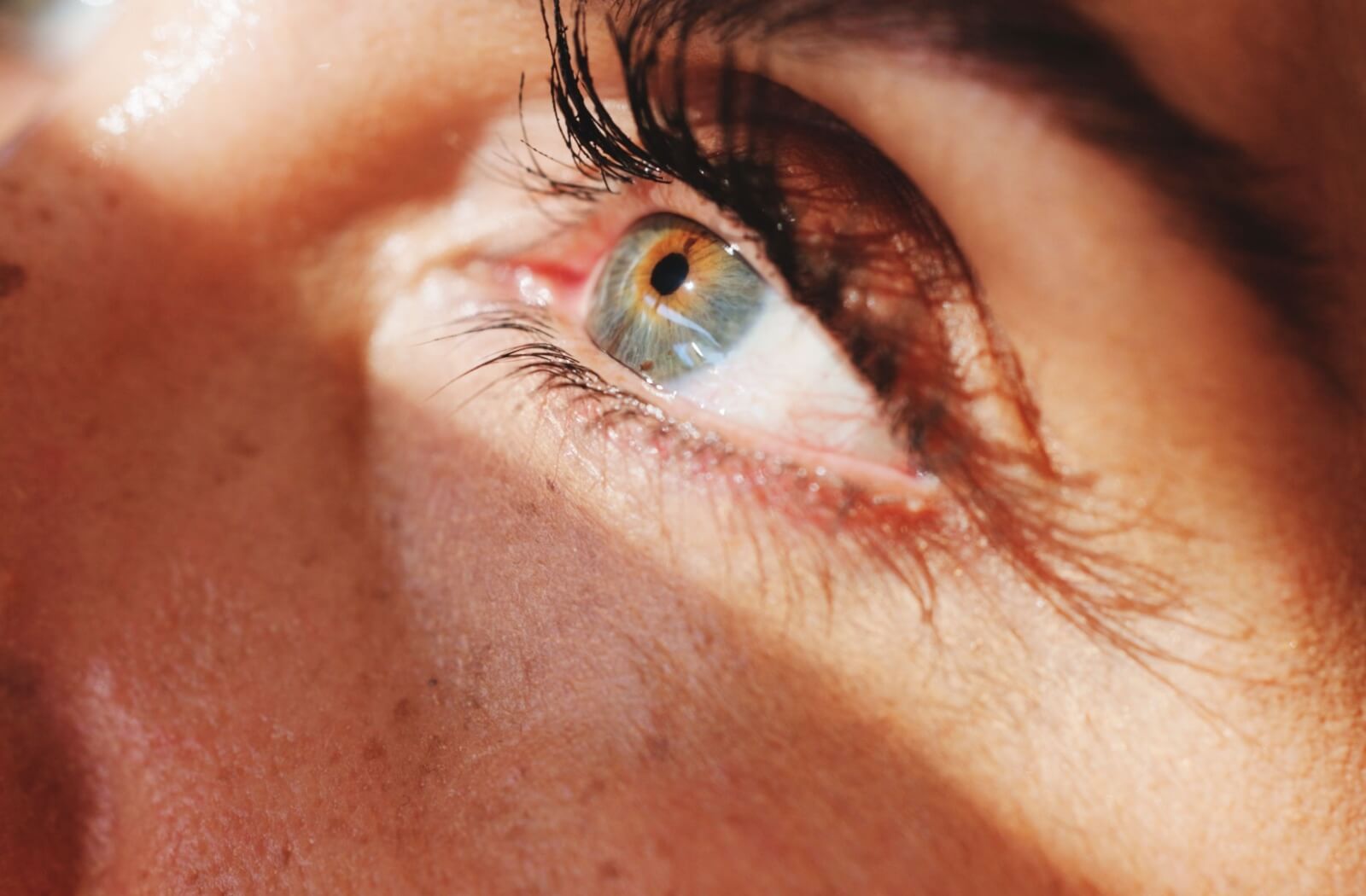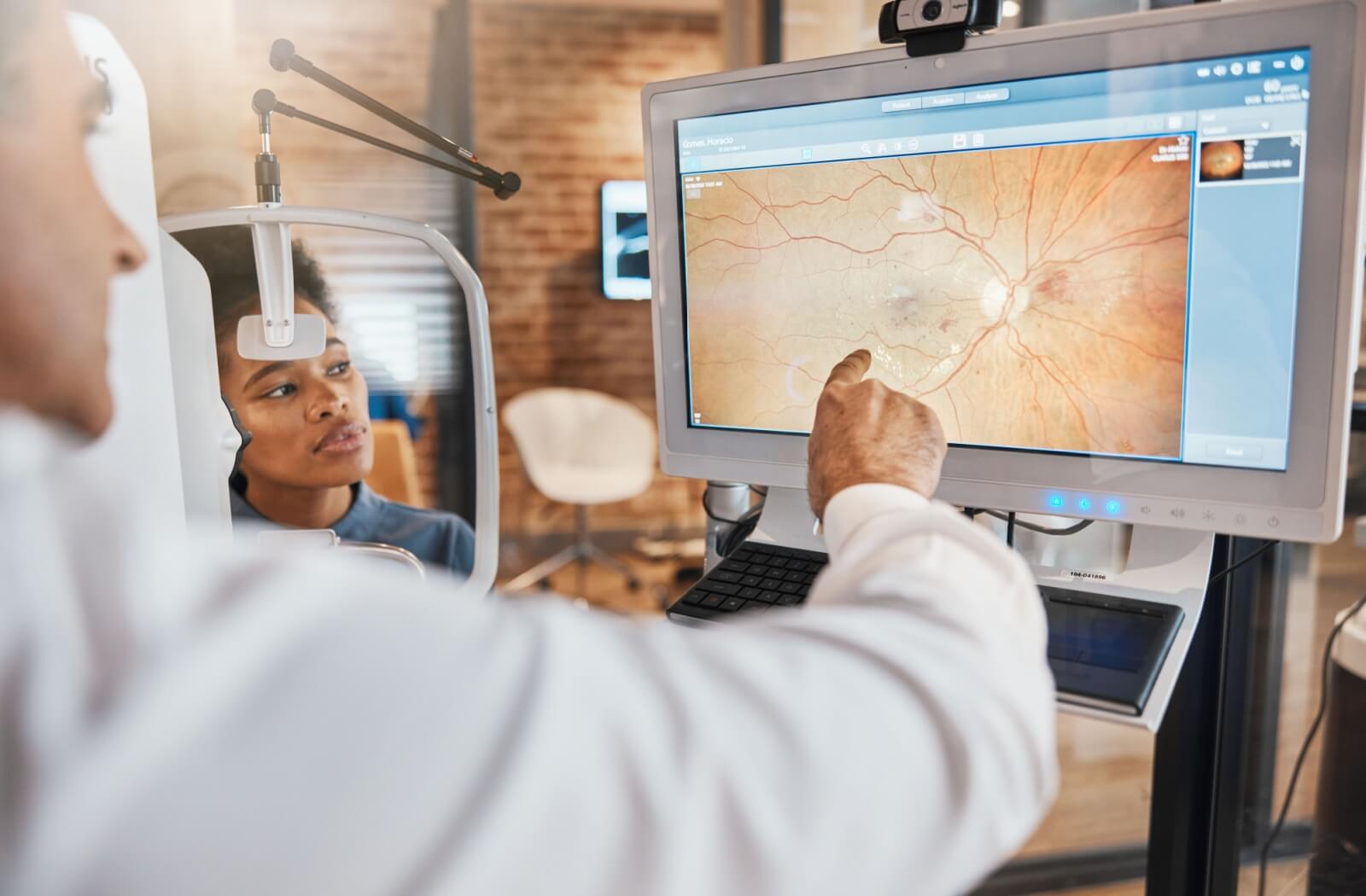Protecting your eyes, whether you’re shooting hoops on the basketball court, cycling through winding trails, or sliding into home base, should always be a priority.
Sports come with their fair share of risks. Although helmets, knee pads, and gloves might come to mind immediately, protective sports eyewear often gets overlooked. The reality? Eye injuries are among the most common sports-related injuries, but are preventable with the right eyewear.
Here are some key features to look for when selecting your latest pair of protective sports eyewear:
- Material durability (polycarbonate is the way to go).
- Comfort and fit.
- Lens options that align with your sport (anti-fog coatings, tinted lenses, etc.)
- Prescription lens options (but protective eyewear is a must if you play sports, even if you don’t need corrective lenses).
- Certification standards, like ASTM F803 for sports.
Our ultimate tip: visit our Eyesis Eyecare team for expert advice. Protecting your eyes doesn’t mean sacrificing visual clarity, comfort, or style, and we’re here to help!
What Is Protective Sports Eyewear?
Protective sports eyewear shields your eyes from potential harm while also correcting your vision.
Although regular eyeglasses or polarized sunglasses can correct your vision or enhance visual contrast during outdoor activities, sports eyewear offers superior durability and function. Protective frames can withstand high-impact situations where standard frames fall short.
These are some key features that distinguish protective sports eyewear:
- Impact resistance: Protective sports eyewear is tested to withstand sudden impacts from objects like balls or debris at high speed, and it’s made with polycarbonate lenses, which are stronger than traditional plastic lenses.
- Wraparound frames: These frames provide complete eye coverage and reduce the chances of debris entering from the sides, offering enhanced protection and peripheral clarity.
- Customizable options: Protective sports eyewear can include prescription lenses, meaning athletes don’t need to compromise on vision.
Everyday sunglasses or regular eyeglasses provide sharp visual clarity and comfort. Protective eyewear goes further, supporting your athletic performance while keeping your eyes safe.
Your Guide to Protective Sports Eyewear: Features to Look For
When buying protective sports eyewear, the options can seem daunting, especially if this is unfamiliar territory. Here are some elements to focus on:
Material Durability
For ultimate durability, look for polycarbonate lens materials. These offer superior impact resistance without compromising visual clarity or comfort.
Polycarbonate lenses are lightweight, shatterproof, and perfect for activities that demand durability.
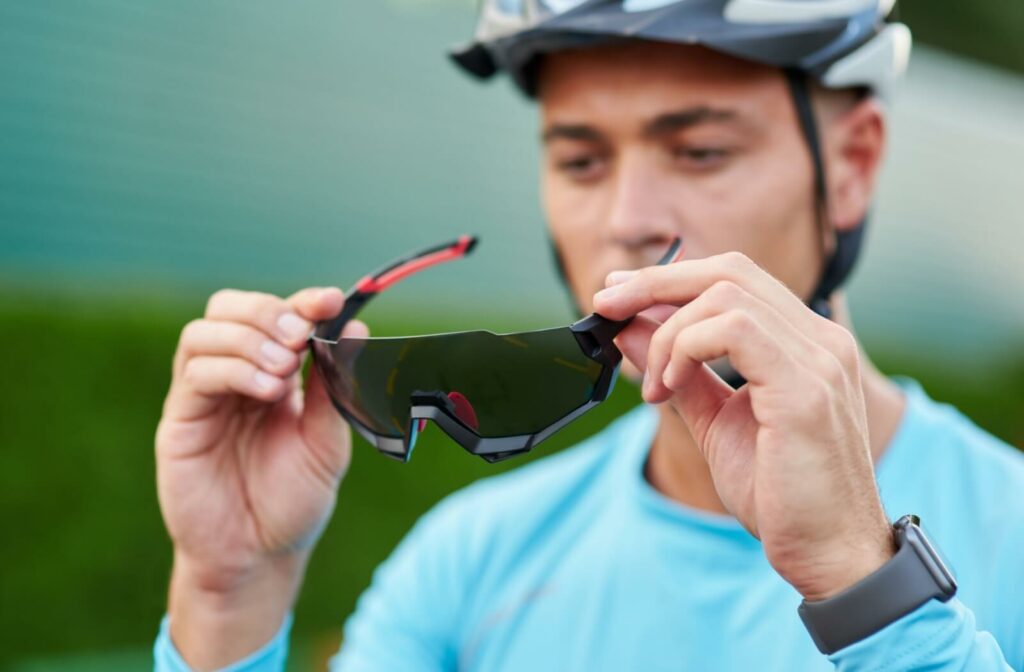
Comfort & Fit
Eyeglasses that slip down your nose during the peak of your game can throw your performance off course. On the other hand, eyewear that fits too snugly can feel uncomfortable.
Well-fitted glasses make a difference. Here’s what to look for:
- Adjustable nose pads and straps for extra security.
- Padding around the frame edges to prevent discomfort.
- Proper measurements from your optometrist for ideal vision alignment and a snug fit without any tightness or pressure.
Lens Options Based on Sport
Every sport is different, and each has its own requirements. For instance, the support you need while playing hockey is different from what you need when you’re playing soccer.
Find lenses that align with the dynamics of your sport of choice:
- Anti-fog coatings for sports in humid or cold environments
- Tinted lenses for activities under direct sunlight (e.g., tennis, cycling)
- Clear, wide-vision lenses for low light (e.g., night-time soccer or indoor games)
Prescription Options
If you need vision correction, check whether your protective eyewear can accommodate a prescription lens.
Certification Standards
Not all protective eyewear is created equal. Apart from differences in lens and frame quality and durability, make sure your eyewear meets safety standards, such as ASTM F803 for sports. If your frames aren’t certified, they may not provide adequate protection during physical impacts.
Additional Features
Choosing the right eyewear will get you far, but these extra tips offer maximum eye protection:
- Regular checkups: Routine eye exams benefit everyone by addressing undetected vision concerns that might affect your health and game performance.
- Lens maintenance: Keep lenses clean and scratch-free by gently wiping them with a microfibre cloth. Place your eyewear safely in its case when not in use. Replace damaged lenses immediately to prevent foreign bodies in your eye during the following practice or game.
- Invest in high-visibility styles: Bright or reflective colours make your frames easy to spot if you misplace them on a busy court or pitch.
Why Should You Protect Your Eyes in Sports?
Imagine competing in a soccer match, and a stray elbow hits you in the eye, causing a corneal abrasion. Or, maybe you’re riding your bike, trying to squint through dust and flying gravel..
Your eyes are one of the most sensitive parts of your body, and sports expose them to numerous risks, including debris, UV rays, and physical injuries.
Protective sports eyewear mitigates these risks and preserves your vision, eye health, and overall confidence, allowing you to continue to enjoy the high-risk activities you love, safely.
Without protective eyewear, these are some risks you face:
- Traumatic eye injuries: Direct blows to the eye can lead to fractures, retinal detachments, or even permanent vision loss.
- UV exposure: Outdoor athletes are especially vulnerable to harmful UV rays during daylight sports.
- Clashes and collisions: Contact sports like basketball or hockey carry significant risks of eye injuries because of player collisions or equipment.
Prioritizing eye safety allows every athlete to enjoy the sport they love without unnecessary risks to their vision while enhancing their overall performance. There’s no greater asset than sharp vision and undeniable confidence.
Competitive Edge with Vision Protection
Every athlete seeks the mental and physical edge that separates good performances from great ones. Protective sports eyewear not only reduces these risks, but can also enhance performance and help you perform at your best.
If you’re considering getting protective eyewear for sports, come to us at Eyesis Eyecare for expert advice.
Together, we can help you find frames and lenses that align with your lifestyle, comfort level, and eye health! Book an appointment today!


